
Hello! I am starting a new series where I will feature an artist, not limited by medium, which I like and want to expose and showcase to more people. My first introduction article is about Jan Matejko, a Polish artist, who I first discovered with the Stańczyk painting. Most of the descriptions are borrowed from sources, linked at the bottom.
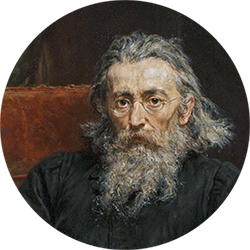
Life of Jan Matejko and early works
Jan Matejko was born in the Free City of Krakow, on June 24, 1838. He was the ninth of eleven children.
Matejko attended the St. Ann's High School, from which he dropped out in 1851 due to his poor performance. Despite this and because of his potential and interest, he studied at the School of Fine Arts in Kraków years 1852 through 1858. As specialization he chose historical painting and his first major work he finished in 1853 - Tsars Shuyski before Zygmunt III.

Carowie Szujscy wprowadzeni przez Żółkiewskiego na sejm warszawski przed Zygmunta III, 1853, 75,5 × 108 cm · Source
His works from this period were centered more around the subject that they were on the visuals, without the complexity and deeper messages, seen in his later works. Jan's paintings have been praised for their color, detail and imagination. He used colors and composition reminiscent of the paintings born during the Renaissance and Baroque eras. We're going to see his style evolve and reach its peak, almost 20 years from the release of Matejko's Tsars Shuyski before Zygmunt III.
For his graduation in 1858, Jan presented the Sigismund I the Old ennobles the professors of the Jagiellonian University.

Zygmunt I Stary nadaje szlachectwo profesorom Uniwersytetu Jagiellońskiego, 1858, 82 x 101 cm · Source
After graduation, in 1859, Matejko received a scholarship to study at the Academy of Fine Arts, Munich. The following year he received a scholarship to study at the Academy of Fine Arts Vienna as well, but after a few days, Matejko returned to his hometown of Kraków and opened a studio at his family home in Floriańska Street.
In 1860 Matejko published an illustrated album, Clothing in Poland, a collection of sketches depicting historical Polish attire.
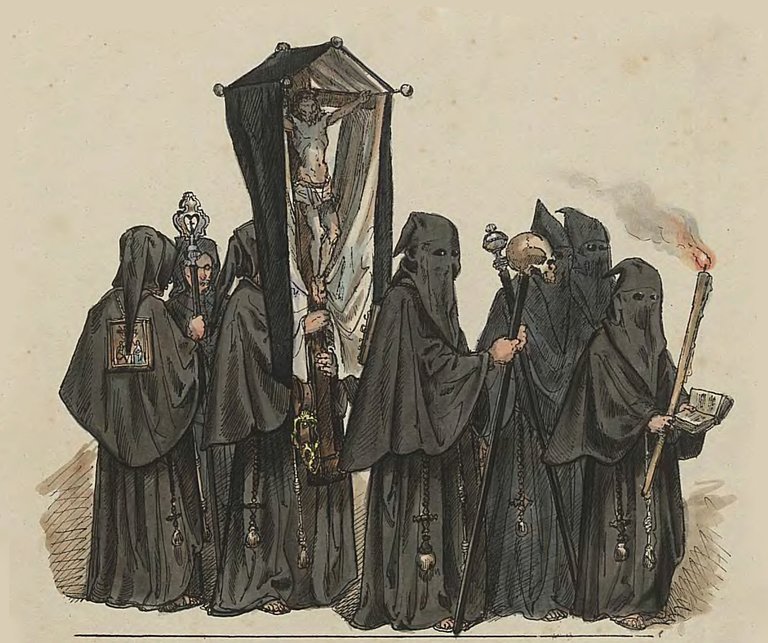
A sketch from Ubiory w Polsce, 1860 · Source
In 1861 and 1862 he finished and sold Death of Wapowski during the crowning of Henry Valois and Jan Kochanowski mourning his daughter Urszulka, which helped settle his debts.

Zabicie Wapowskiego w czasie koronacji Henryka Walezego, 1861, 132 x 101 cm · Source

Jan Kochanowski nad zwłokami Urszulki, 1862, 98 x 122 cm · Source
In 1862 he finished a painting, Stańczyk, leading us to our next chapter.
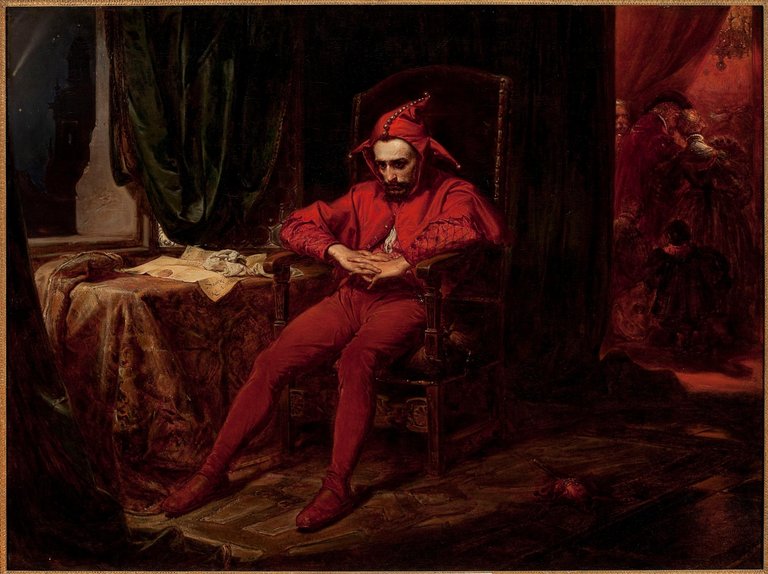 Stańczyk, 1962, 88 x 120 cm · Source
Stańczyk, 1962, 88 x 120 cm · SourceIt is also a personal favorite of mine.
The painting depicts a grieving jester and features a mix of contrasts, the contrast between the usually entertaining jester and the state we see him in, and the contrast between the emotions and feel of the main room, as opposed to the room in the background, where a lively event is going on. The work is one that marks a visible transition in Matejko's art style.
"Stańczyk focuses on the court jester, portrayed as a symbol of country's conscience, sitting in a chair in the background reflecting on the war, ignored by the joyful crowd."
A lot can be and has been said about this painting, furthermore proving its excellence. I suggest you read through the Wikipedia article if you're interested.
In 1864, the year after, he finished Year 1863 – Polonia
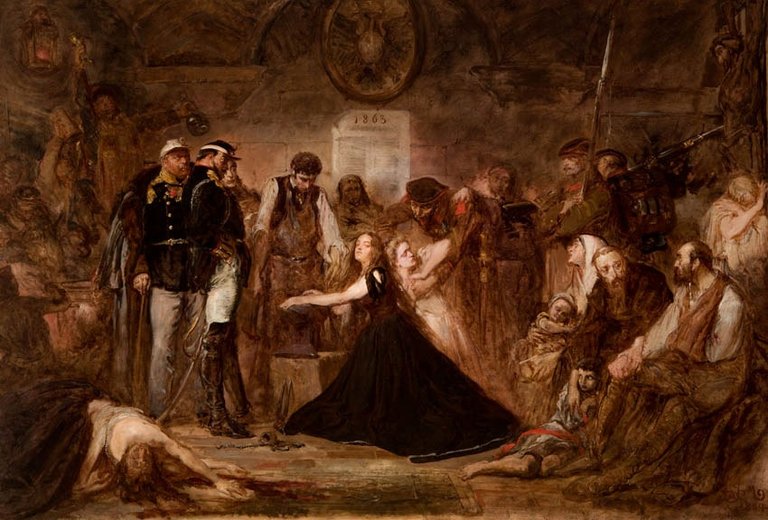
Zakuwana Polska (Polonia, Rok 1863), 1864, 156 × 232 cm · Source
In May of 1864, Matejko finished his Skarga's Sermon, a painting which in 1865 is going to be awarded a gold medal at the yearly Paris salon.
.jpg)
Kazanie Skargi, 1864, 224 x 397 cm · Source
On 5 November that same year, in recognition for his contributions to recreating historical themes, he became a member of the Kraków Scientific Society.
In 1867, his painting Rejtan was awarded a gold medal at the World Exhibition in Paris.
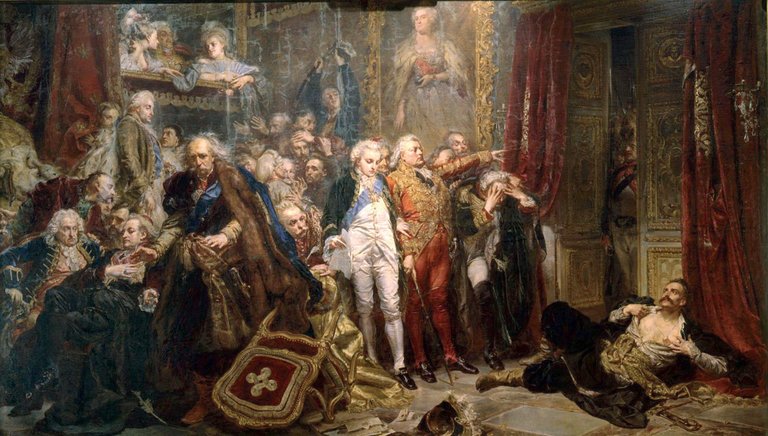
Rejtan at Sejm of 1773, 1866, 282 x 487 cm · Source
His next major work was the Union of Lublin, created in the years 1867-1869.
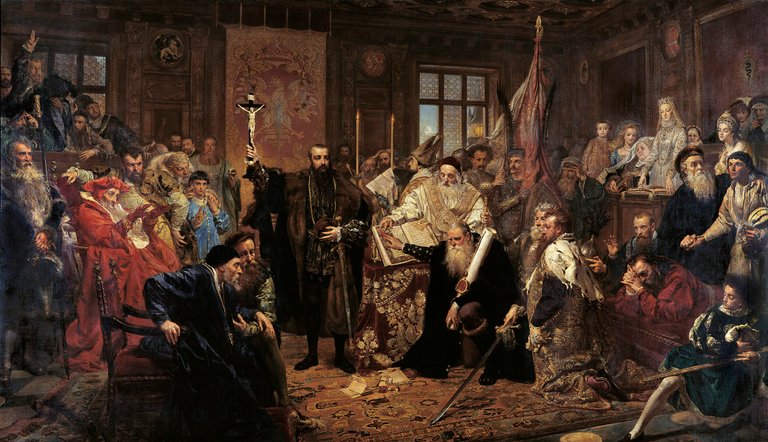
Unia Lubelska, 1867-1869, 298 x 512 cm · Source
Once again applauded in Paris, it won Matejko a Cross of the French Légion d'honneur.
Union of Lublin was followed by Stefan Batory at Pskov, finished in 1872.
.png)
Stefan Batory pod Pskowem, 1872, 322 x 545 cm · Source
In 1873 he finished the Astronomer Copernicus, or Conversations with God.
“Astronomer Copernicus, or Conversations with God is an oil paiting depicting Nicolaus Copernicus observing the heavens from a balcony by a tower near the cathedral in Frombork. Matejko began his work on this painting in 1871, in preparation for the celebrations of the anniversary of Copernicus's 400th birthday.
The painting itself depicts a kneeling, inspired Nicolaus Copernicus observing the heavens transitioning from night to dawn. He is on a balcony, near or at the cathedral in Frombork, surrounded by various astronomical tools and aids. The scene likely portrays the epiphany moment of Copernicus profound discovery, with his own Heliocentric model drawn on a large flat board standing next to him.“ Source
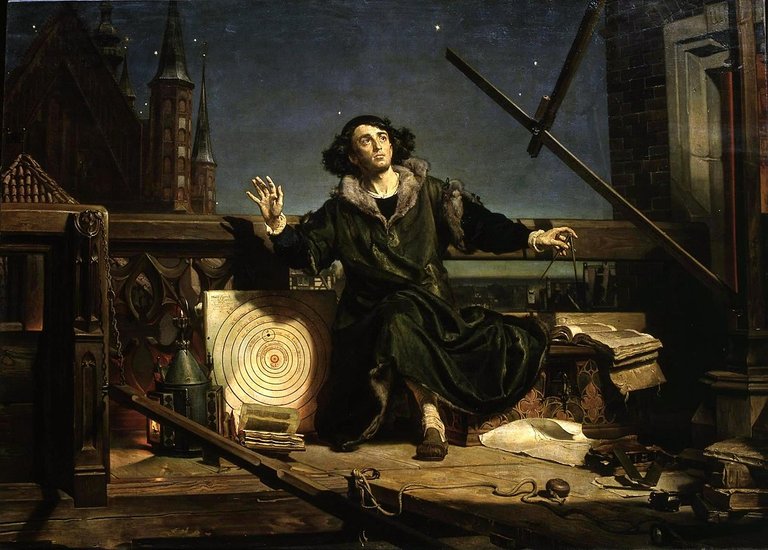
Astronom Kopernik, czyli rozmowa z Bogiem, 1973, 225 x 315 cm · Source
In 1872 during an exhibition in Prague he was offered a directorship of the Academy of Fine Arts, Prague, and soon afterwards, a similar position at Kraków's School of Fine Arts. He accepted the Kraków offer, and was for many years the principal (rector) of the Academy of Fine Arts.
Following the incredible Astronomer Copernicus, or Conversations with God is the incredible The Hanging of the Sigismund bell, 1874.
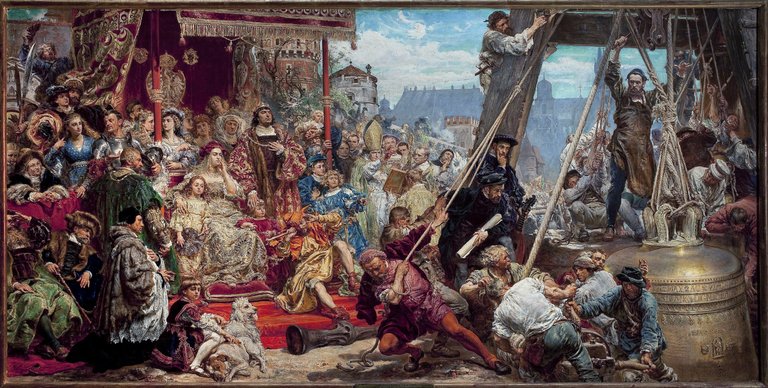
Zawieszenie dzwonu Zygmunta, 1874, 94 × 189 cm · Source
In 1878 he finished Battle of Grunwald.
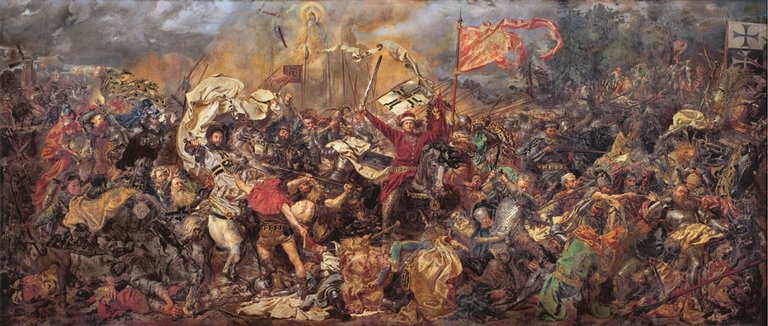
Bitwa pod Grunwaldem, 1878, 426 x 987 · Source
That year he received an "honorary grand gold" medal in Paris, and the city council of Kraków presented him with a ceremonial scepter, a symbol of his "royal status in fine arts".
Years 1880-1882 marked his work on another large painting, 388 cm in height and 875 cm in width, Prussian Tribute. Matejko gifted this painting to "the Polish nation", and it earned him honorary citizenship of Kraków; one of the squares in the city was also named Matejko Square.
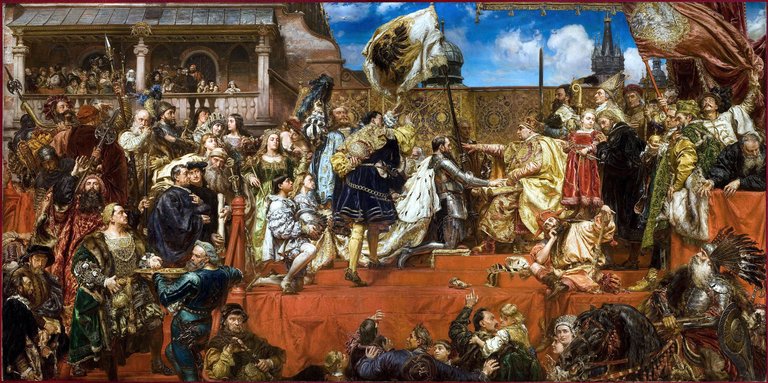
Hołd Pruski, 1880-1882, 388 x 875 cm · Source
In 1883 he finished Sobieski at Vienna. The painting was gifted to Pope Leo XIII as a "gift of the Polish nation".

Sobieski pod Wiedniem, 1882-1883, 458 x 894 cm · Source
In 1886, he finished a painting about French rather than about Polish history: Virgin of Orléans, portraying Joan of Arc. The painting can be best described as epic.
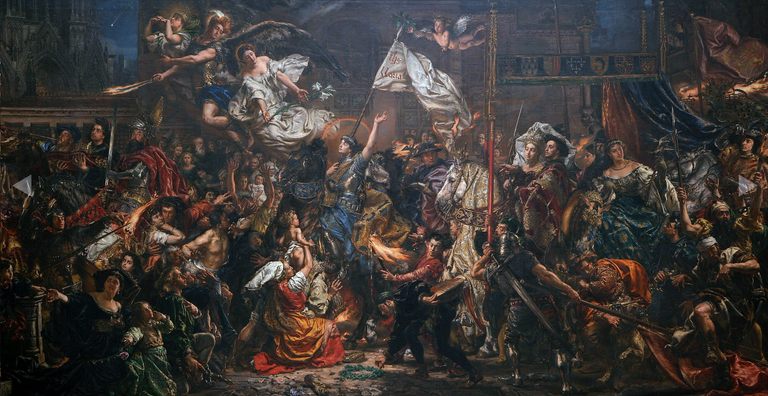
Dziewica orleańska (Joanna d’Arc), 1886, 484 x 973 cm · Source
Next year, 1887, Matejko received a Doctor of Philosophy degree, honoris causa, from the Jagiellonian University, and the Austrian Litteris et Artibus.
In the following 1888 he finished Batte of Racławice.

Bitwa pod Racławicami, 1888, 465 x 879 cm · Source
In 1888-1889, to justify his new academic title, he published a cycle of twelve sketches with an accompanying commentary, History of civilization in Poland.
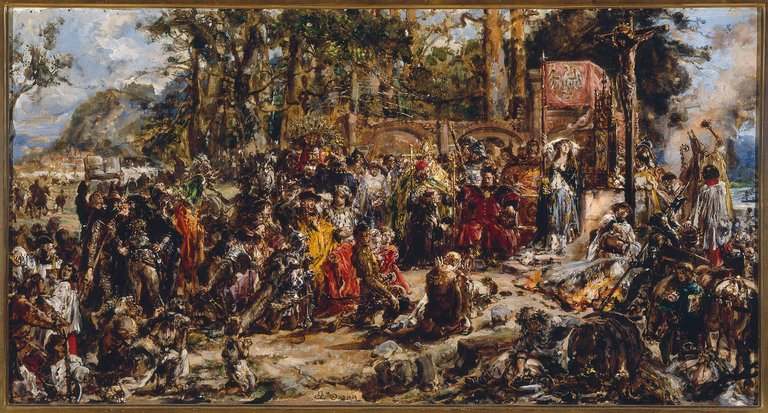
One of the twelve sketches, Dzieje Cywilizacji w Polsce · Source
From 1890 to 1892 he published another cycle of sketches, this time of Polish kings - Fellowship of the kings and princes of Poland, which over the years became so popular that its portraits are seen as the canon portrayals of their subjects.

1891 saw him finishing Constitution of the 3 May.
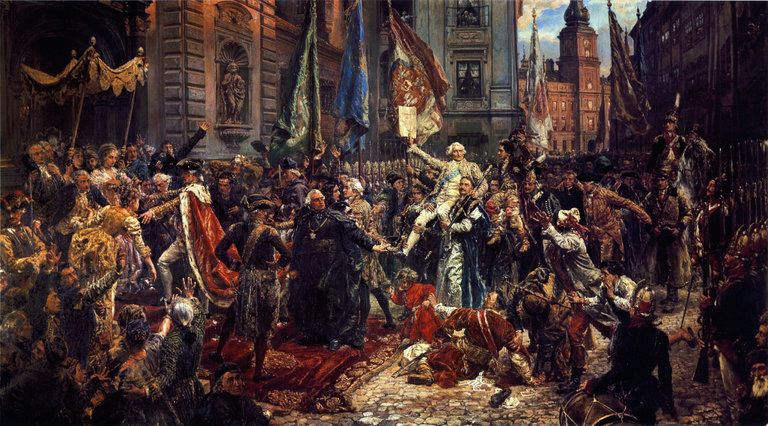
Konstytucja 3 Maja, 1891, 247 × 446 cm · Source
In 1892, a year before his death, Jan finished his Self-portrait.
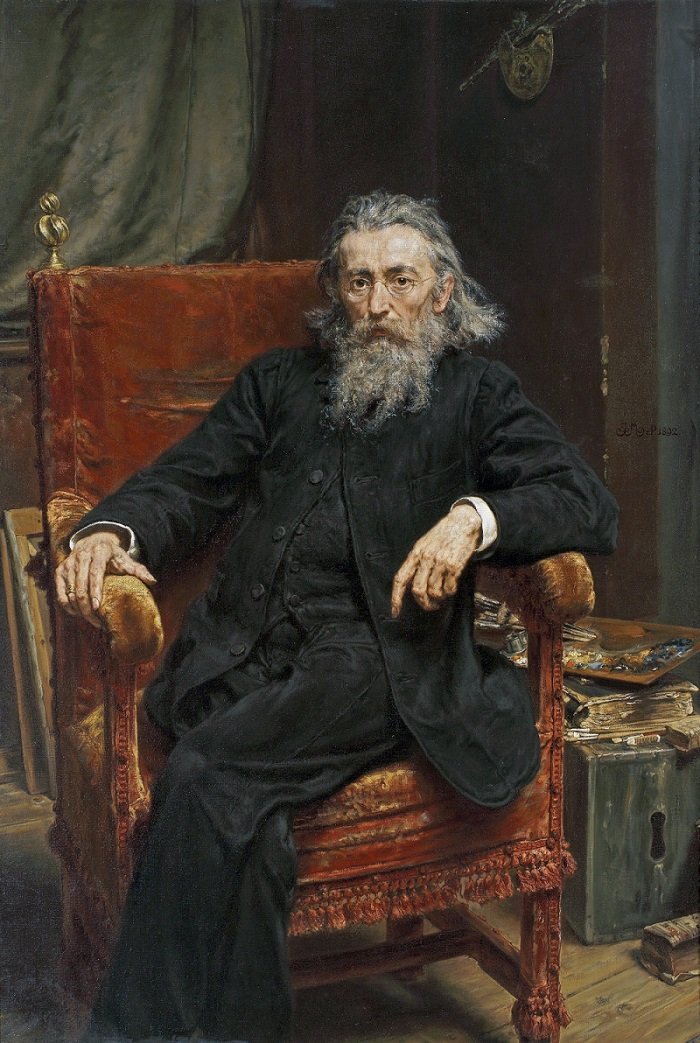
Autoportret, 1892, 160 × 110 cm · Source
He then began work on another large painting, Oaths of Jan Kazimierz, but it remained unfinished due to his death.
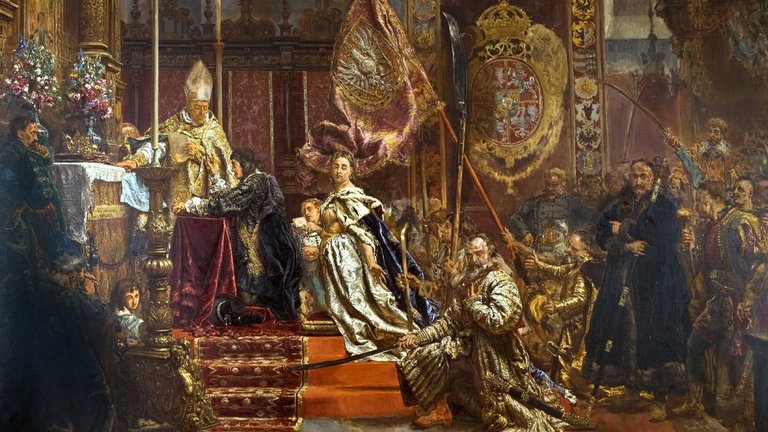
Śluby Jana Kazimierza, 1893, 315 × 500 cm · Source
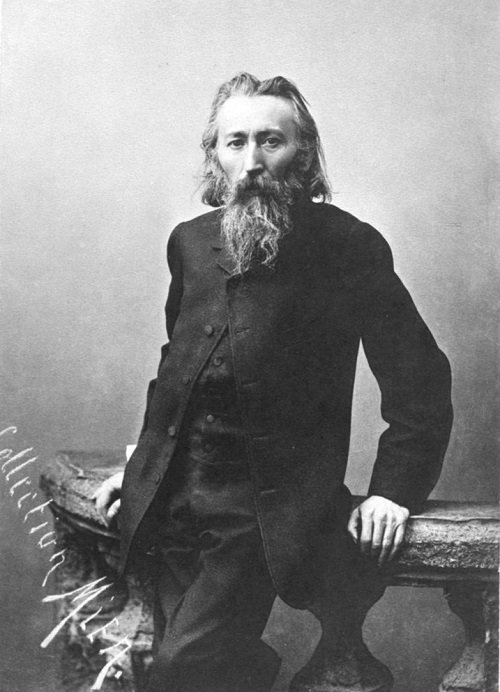
Jan Matejko, June 24, 1838 - November 1, 1893 · Source
If you like what I’m doing and want to see more, please upvote and resteem,
it really helps!
Tell me what you think in the comments. Who would you like to see next?
Thank you so much for your support!
it really helps!
Tell me what you think in the comments. Who would you like to see next?
Thank you so much for your support!
[1] · [2] · [3]
Congratulations @getsoff! You received a personal award!
You can view your badges on your Steem Board and compare to others on the Steem Ranking
Do not miss the last post from @steemitboard: